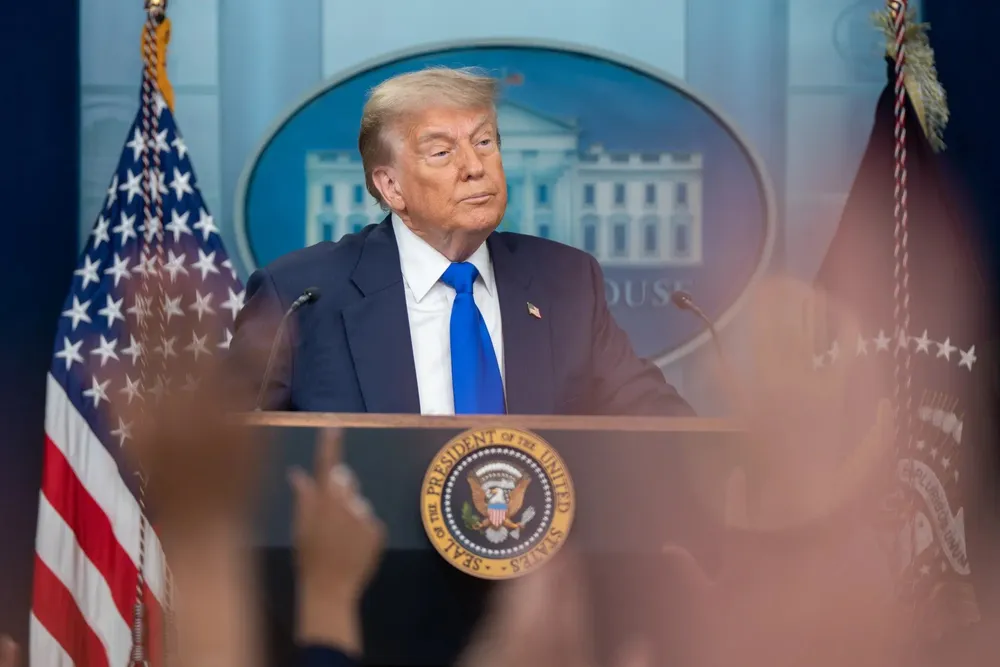Trump throws new monkey wrench at wind and solar on federal lands
Department of Interior directive would require Secretary to sign off on 69 separate milestone actions for final approval

Wind and solar development on federal lands could become much more complicated, costly, and risky under new guidelines issued Thursday by the Department of Interior (DoI).
Secretary Doug Burgum will now personally sign off on a list of 69 actions that projects must take on the path to final permitting approval by DoI.
It administers most federal lands and coastal waters through the Bureau of Land Management (BLM) and Bureau of Ocean Energy Management.
These are public lands that are owned collectively by the American people. Most are located on the US outer continental shelf and in the western half of the country, and contain most of the best untapped wind and solar resources.
“All decisions, actions, consultations, and other undertakings… related to wind and solar energy facilities shall require” final review by the Office of the Secretary, DoI’s chief of staff Gregory Wischer wrote.
The memo, which references multiple anti-renewables executive orders issued by President Donald Trump, states that its aim is to end "Preferential Treatment for Unreliable, Subsidy-Dependent Wind and Solar Energy."
The 69 actions range from notices to proceed to scoping reports, land use plans, lease sales, site assessment plans, temporary use permits and road authorisations. “These review procedures are effectively (sic) immediately,” it said.
Adam Seuss, acting assistant secretary for lands and minerals management, said, "Today’s actions further deliver on President Trump’s promise to tackle the Green New Scam and protect the American taxpayers’ dollars.”
“American Energy Dominance is driven by US based production of reliable baseload energy, not regulatory favoritism towards unreliable energy projects that are solely dependent on taxpayer subsidies and foreign-sourced equipment," he added.
Wind in the crosshairs
Today's directive follows the President’s 7 July order aiming to further tighten access by wind and solar projects to tax credits that were already dramatically curtailed by the newly minted ‘big beautiful’ budget bill (BBB) signed by Trump 4 July.
Trump’s order was apparently in response to Republicans in the House of Representatives dissatisfied with safe harbours for projects that start construction or spend at least 5% of Capex within a year or go into operation by the end of 2027.
In further keeping with BBB provisions, DoI said it will “eliminate longstanding right-of-way and capacity fee discounts for existing and future wind and solar projects, bringing an end to years of subsidies for economically unviable energy development.
“These actions mark a return to common-sense permitting standards that support national security, grid stability and American job creation,” DoI added.
The memo clouded the outlook mostly for solar and offshore wind development as 95% of onshore wind is on private lands.
DoI manages some 245 million acres (1 million sq. km) of land and around 3.2 billion acres of seabed through various agencies, including BLM and BOEM.
Offshore wind is particularly vulnerable to Presidential orders as virtually all development is in federal waters managed by BOEM. Trump's actions against the sector have slashed viable capacity from 19GW to around 6GW already in construction. This directive will have little impact, though, as Trump has already frozen sector permitting through previous executive action.
As of 17 January, BLM listed 67 renewable energy and clean energy transmission projects with only three wind totaling 2.82GW nameplate capacity. There were 35 solar totaling 20.8GW.
The company's US subsidiary did not respond to a request for comment on the project's status.
NextEra Energy's 600MW Jackalope project, also in Wyoming, was still moving through the environmental review process, the official said. The status of LS Power's 900MW Salmon Falls project in the queue was not immediately clear.
Industry reaction
Jason Grumet, CEO of renewables advocacy group American Clean Power Association (ACP), called the memo “a bewildering departure from the Administration’s promise to bring down energy prices and make America competitive in the race against China for AI and data centers.
“In stark contradiction to the Administration’s commitment to tackling bureaucracy, this directive adds three new layers of needless process and unprecedented political review to the construction of domestic energy projects,” he added.
Stephanie Francoeur, special vice president for Communications & External Affairs at offshore wind advocacy group Oceantic Network said the new directive will “will result in higher energy costs, increased blackouts, job loss, and billions of dollars in stranded investments.”
The DoI memorandum would slow down development of the nation’s fastest growing power sources amid what many see as data centre-driven surging power demand.
Consultancy Brattle Group sees peak loads rocketing 36% by 2035, while ACP forecasts 35-50% overall growth by 2040.
Wind and solar comprised over 90% of new capacity added last year.
"This isn't oversight. It’s obstruction that will needlessly harm the fastest growing sources of electric power,” said Grumet.
(Copyright)